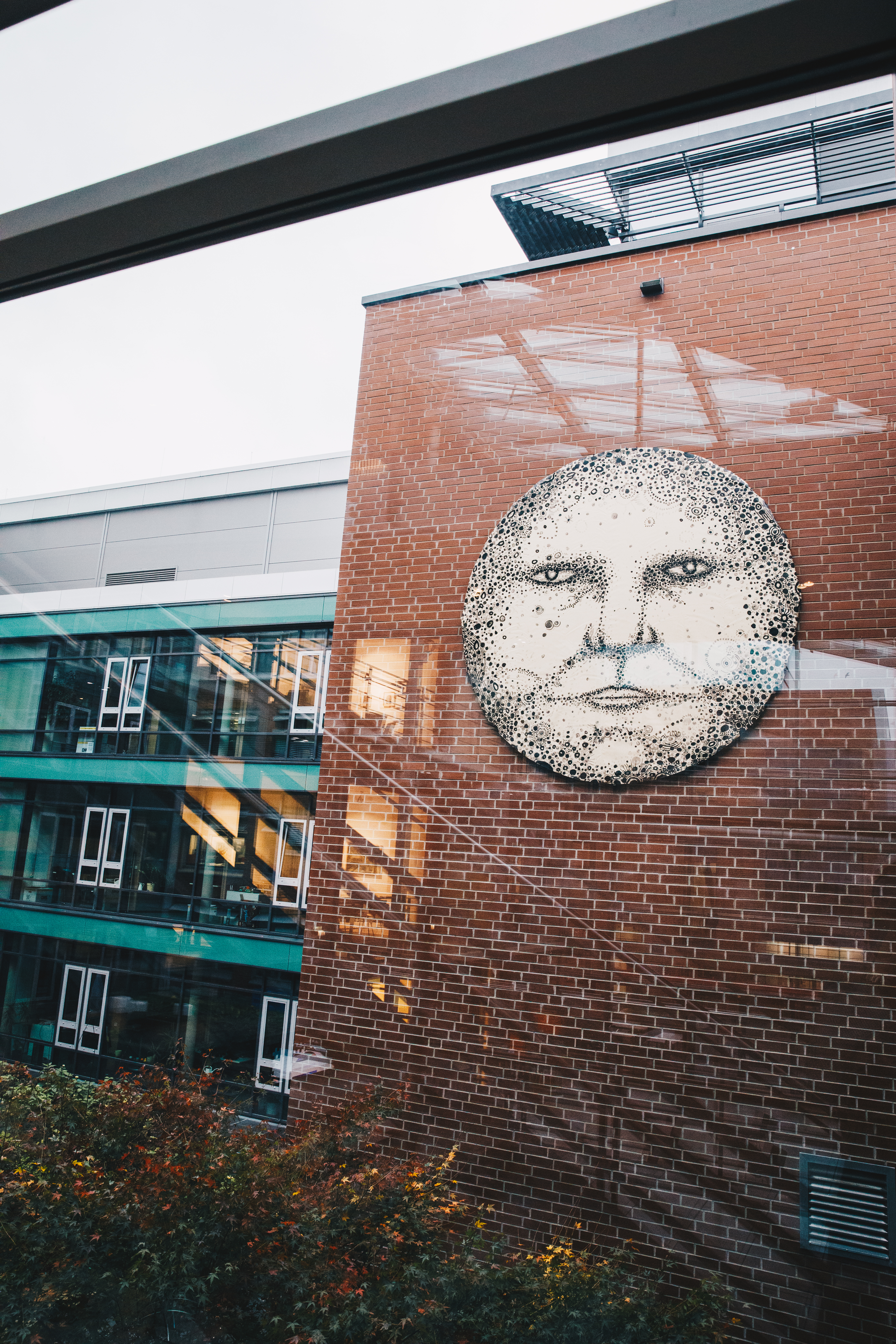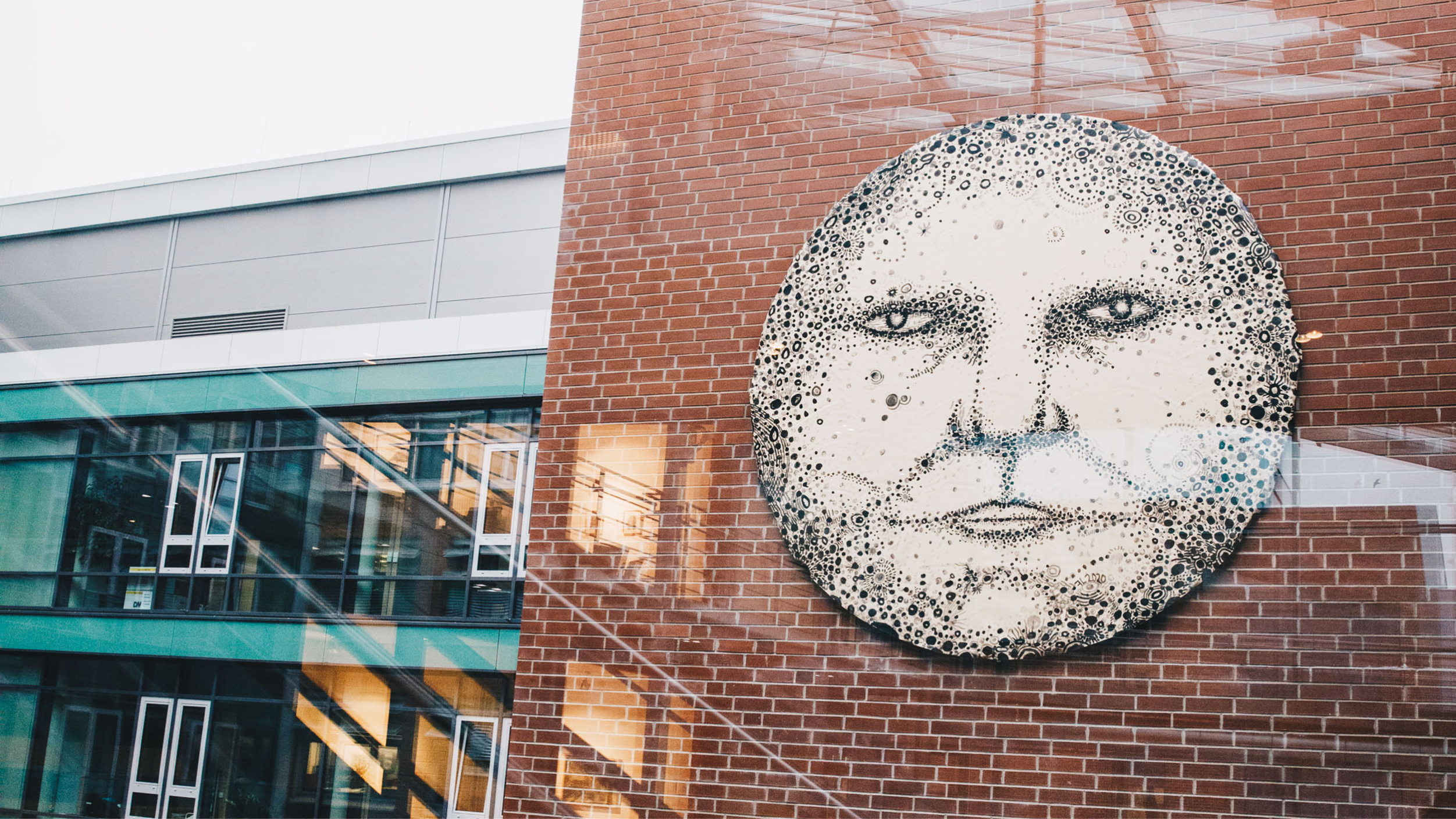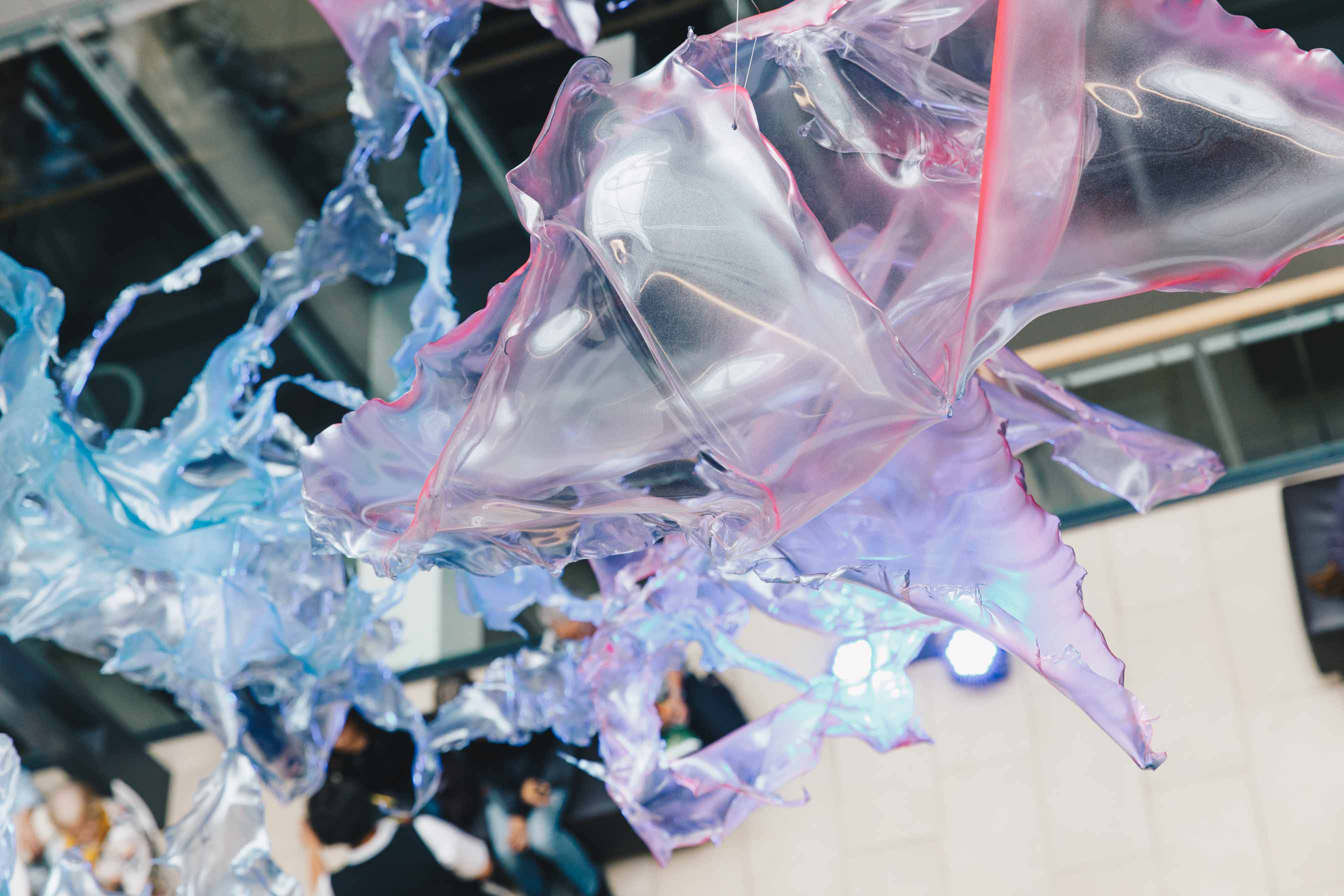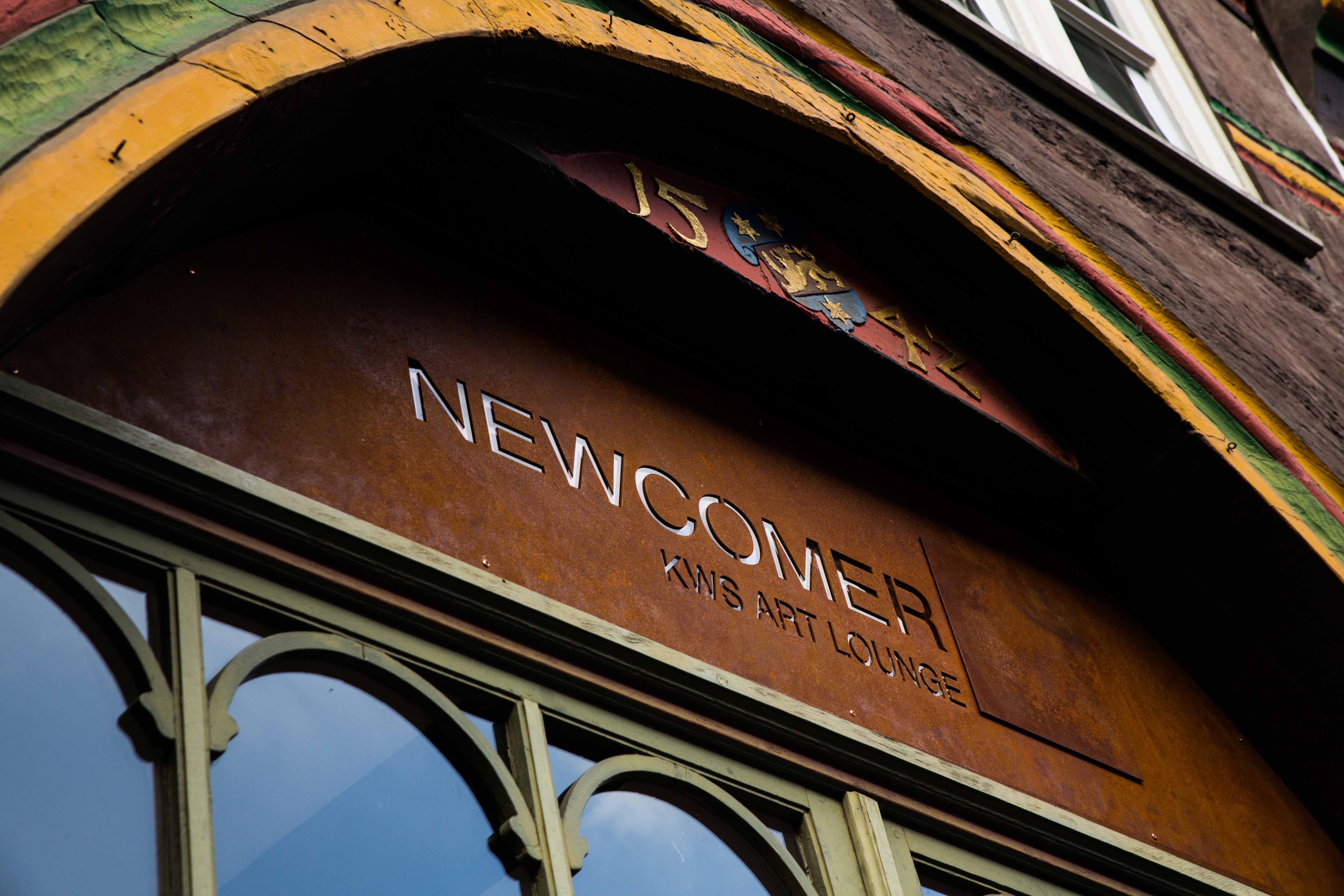Exhibition:
hortus ortus - Fabian Lehnert
The Leipzig artist Fabian Lehnert combines in his pictorial concepts and strategies our pleasure in viewing. He leads us into wondrous, fascinating plant worlds. Worlds populated by human and animal beings or hybrids. His preferred media are drawing and printmaking, although he also likes to leave the drawing page to work on larger surfaces. For the exhibition in the Biotechnikum of KWS he paints directly at the exhibition site.
About nature, fairy tales and their inhabitants
The Bremen Town Musicians, published in 1819 by the Brothers Grimm in their first volume of Children's and Household Tales, is one of those fairy tales whose metaphorical meaning can still be projected particularly well onto our capitalist system and our neoliberal understanding of work today.
After years of hard physical labor and faithful service to their masters, the four protagonists - donkey, dog, cat, and rooster - find themselves, robbed of their youth and strength, to be a useless and unwanted burden that can only be removed by a death blow. An early example of Ageism!
The animals know how to help themselves and escape their fate by wandering to Bremen to become musicians. It is well known that they never arrive in Bremen, because on their way they stop at a beautiful forest hut, which is inhabited by brigands.
Quickly the four of them get the idea of the animal pyramid. One standing on the back of the other, the four single animals turn into a bizarre and shapeless monster, which with the rising cacophony of their screaming frightens the robbers so much that they quickly take flight. By acting together and standing together as a group, the animals succeed in emancipating themselves from their masters, getting rid of the brigands and creating a solidary and mutually supporting living community in the "occupied" forest hut.
Each individual animal is a copy based on templates from old encyclopedias from the 17th to 19th centuries
The graphic oeuvre of the artist Fabian Lehnert also presents animal mountains, accumulations of animals, which in their composition seem as bizarre and disconcerting as the Bremen Town Musician Pyramid.
There is, for example, the sheet "Apteryx", in which a kiwi dominates the picture. Around the flightless bird, but especially on its back, numerous other birds are gathered: Rock-penguins, a reef-heron, the also flightless Kakapo belonging to the family of the parrots and even representatives of the already extinct run-birds Moa. All these animals are united by two things: Firstly, their habitat, because they are species that only occur in New Zealand. Secondly, the motif itself, because each individual animal is a copy that Lehnert takesfrom old encyclopedias from the 17th to 19th centuries.
Another sheet entitled "Tapirus Indicus" depicts the Malaysian fauna around tapir, porcupine, nose monkey and gibbon. But also native animal mountains get their appearance in the etching "Meles Meles" with badger, hedgehog, squirrel and red fox.
The encyclopedia has the claim to be a particularly extensive reference work, but with the exception of perhaps Wikipedia as a dynamically growing and constantly updated encyclopedia, it can only ever depict a snapshot of the existing knowledge of a certain time and space. It is therefore not immune to outdated knowledge or even errors.
An example of this is the representation and, connected with it, our idea of the flightless bird Dodo, which has been extinct since the 17th century. Discovered by Dutch sailors on the island of Mauritius at the end of the 16th century, the first European depictions of the birds were made according to the stories of the sailors. Similar to the way Albrecht Dürer relied only on records when drawing his rhinoceros without ever having seen the animal himself, representations of the dodo were created without any of the engravers of the time ever having seen a living specimen of the bird.
“What fascinates me is that the individual elements fit together like a puzzle. The basic construction plan is the same for all living things. ”- Fabian Lehnert
Since prehistoric times, the history and proliferation of mankind has been closely linked to the mass extinction of species1, but the reception of the extinct dodo is particularly touching and romantic. Hardly a century after its discovery by humans, the animal became extinct. The trusting dodo had no natural predators on Mauritius and was therefore a particularly easy prey when hunting. Introduced rats, dogs and pigs did the rest and destroyed especially the eggs laid in ground nests.
The dodo's popularity, which continues to this day, was probably also due to its appearance in Lewis Carroll's Alice in Wonderland.2 And as magical as its appearance in Carroll's novel is, the image we have of this bird stems no less strongly from the imagination of artists who first formed the dodo based on oral and written records, then copied it from each other, drawing after drawing, thus creating over the centuries a rich and varied vocabulary of dodo forms. Only after skeletal finds, which are now shown as composite reconstructions in various natural history museums around the world, was the image of the dodo corrected.
1 Harari, Juval, in: Sapiens. A Brief History of Humankind, London 2014, S. 72-83.
2 “At last the Dodo said, ‘Everybody has won, and all must have prizes.’”, in: Carroll, Lewis: Alice’s Adventures in Wonderland, New York, S. 32 ff.
For hikes and walks through nature
Findings of bones also play an important role in Fabian Lehnert's series of works "Ossa". During hikes and walks through nature, Lehnert repeatedly came across decaying animals, some still with plumage or fur, but often dissolved down to the skeleton.
What initially began as a mere collection of found objects, the artist integrated into his art over time. Similar to natural history collections, he sifts, cleans, classifies and reassembles the bones in object boxes and picture frames. Only gradually, out of the artistic working process, did the drawings and paintings of the "Ossa" series emerge, into which the bones fit quite naturally.
Chimeras - half human, half animal beings
Lehnert's surreal-looking chimeras, half human, half animal beings, also emerge from the drawing and printing process. The strokes the artist makes while drawing suddenly look like the fur pattern of an animal and the human figure transforms into a hybrid being by itself. Over the years, this has resulted in a large number of prints in which Lehnert's observations of nature and his artistic imagination come together to create completely new creatures. These pictorial worlds are reminiscent of motifs by surrealist artists such as Odilon Redon or symbolist painters such as Fernand Khnopff. In the bird-like mixed creatures, one can even see similarities to Max Ernst's alter ego "Loplop", the birdlike mixed creature that repeatedly haunted the artist's works. In Fabian Lehnert's fairy-tale worlds of images, what is important to the artist is manifested in a particularly beautiful way: to unite his passion for nature and art.
The digital exhibition "hortus ortus" with paintings, drawings and prints includes an excerpt from the works of Fabian Lehnert and was supplemented with the text by the art historian Elmas Şenol. The brochure contains all the works exhibited in Einbeck, including prices. It is also available here as a PDF download. Further information is available on request from Ms. Bettina Alex.
hortus ortus - Fabian Lehnert
only online from 6. November 2020
Art in the BiT, KWS SAAT SE & Co. KGaA
Grimsehlstraße 31, 37574 Einbeck
About the artists - Fabian Lehnert & Elmas Şenol
Artist: Fabian Lehnert
He was born in Leipzig in 1984. In 2005 he began his studies at the University of Fine Arts in Braunschweig, received his diploma in 2011 and trained his trade as a master student with Professor Wolfgang Ellenrieder. He lives and works in Leipzig.
Lehnert received i.a. Scholarships from Denkzeit, Kulturstiftung des Freistaates Sachsen (2020) and from the Kunststiftung Kunze, Gifhorn (2017).
With his paintings, drawings and prints, Fabian Lehnert takes us into wondrous, fantastic worlds of plants and animals.
Art historian: Elmas Şenol
Elmas Şenol (* 1986 in Cologne) lives and works in Berlin. She studied art history, classical archeology and Anglistics in Bonn and Rome. In 2018 she curated the first institutional solo exhibition of the Guerrilla Girls in Germany - especially at the height of the #metoo and #notsurprised debates.
Her curatorial interest lies particularly in artistic positions in which formal aesthetics meet content with socially relevant topics.
Discover more
Your contact
































